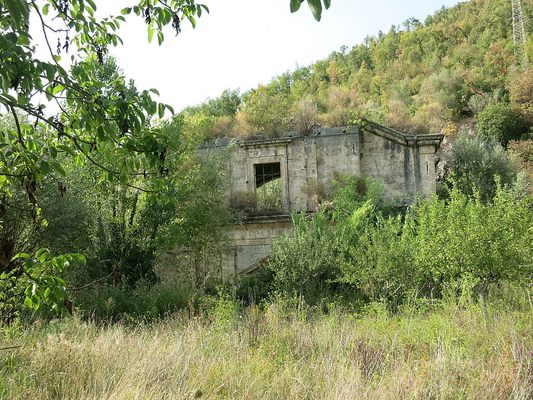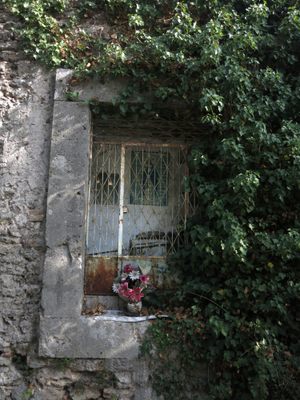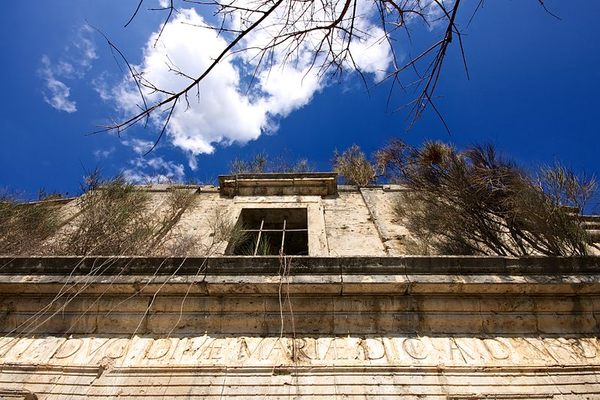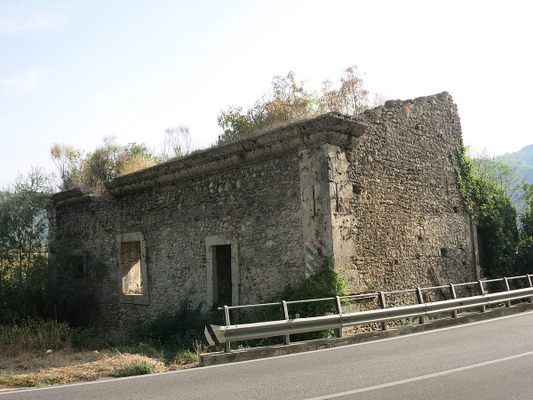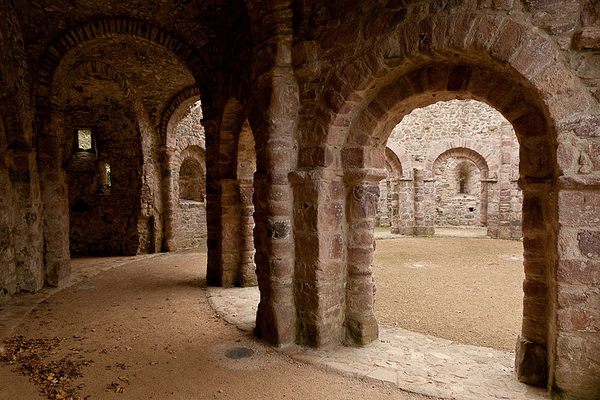About
It's easy to miss the remains of the flooded Chiesa di Santa Maria when driving through the village of Vittorino from Cittaducale towards Terme di Cotilia. But this sunken ruin is one of the most spectacular and unexpected sites in the Sabina region of central Italy.
It was renovated and expanded at the beginning of the 17th century by the Bishop of Cittaducale, as evidenced by the Latin inscription still visible on the façade, and soon became one of the valley's major religious sites. But the architects ignored (or underplayed) the risks of building such a fine church on an unstable karst landscape in a marshy wetland.
Sure enough—possibly caused by the earthquake of 1703—a sinkhole in the eroded limestone opened up and flooded the church. It wasn't long before the roof collapsed and the building had to be abandoned. The remains are now half-submerged, with a spring flowing through the decaying interior and out of the doorway.
The Chiesa di Santa Maria (Church of Saint Mary) may have originally been built in honor of Saint Victorinus, an early Christian martyr who was the bishop of the ancient town of Amiternum nearby. It's believed that Victorinus was martyred in the 1st century by being hung upside-down over a sulfurous pond for three days. His remains were preserved in a crypt under the original Roman church in Vittorino, but moved before it was rebuilt in the 17th century.
Nowadays the sunken church may seem forlorn, but its strange flooded interior and the dense vegetation that has slowly conquered its walls continue to inspire travelers and artists, such as Russian Director Andrei Tarkovsky, who used the site as a setting for his 1983 film Nostalghia.
Related Tags
Know Before You Go
The church can be accessed from a short trail that leads down from a lay-by on the right side of the lane before Terme di Cotilia (88,1 KM of the Via Salaria). There are planks and small bridges that allow visitors to safely cross the waterlogged interior. The site is, of course, a ruin, so caution is recommended.
The same geological process that led to the church's demise also caused the nearby Lake of Paterno (where the Sabines worshipped an Italic Goddess named Vacuna on a floating island, as described by Pliny the Elder, Varro, and Seneca) and the sulphur springs of Aquae Cutiliae (where the Flavian dynasty built their thermal baths).
Flavors of Italy: Roman Carbonara, Florentine Steak & Venetian Cocktails
Savor local cuisine across Rome, Florence & Venice.
Book NowPublished
October 16, 2018
